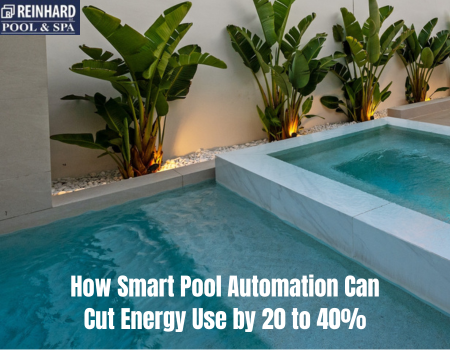If you own a pool, you already know how energy-intensive it can be. Between running the pump, heater, and lights, your monthly bills can add up fast. But what if you could cut that energy use by nearly half without giving up comfort or convenience? That’s exactly what smart pool automation systems can do. These systems combine intelligent controls with energy-efficient scheduling to optimize how and when your pool equipment runs, saving you both power and money.
 What Is Smart Pool Automation?
What Is Smart Pool Automation?
Smart pool automation refers to a system that lets you control your pool’s functions like pumps, lights, heaters, and chlorinators from a single digital platform. You can manage everything through your smartphone, tablet, or a wall-mounted control panel. The system uses sensors and programmable settings to adjust automatically based on real-time conditions, like temperature or pool usage.
In simple terms, it’s like having a personal assistant for your pool who makes sure nothing runs longer or harder than it needs to.
How Pool Automation Cuts Energy Use
One of the biggest sources of wasted energy in pool maintenance comes from inefficient scheduling. Traditional pool pumps often run at full speed for hours, even when it’s unnecessary. Smart pool automation fixes this by optimizing operation times and speeds.
For example, when paired with a variable-speed pump, your automation system can run the pump at lower speeds for filtration during off-peak hours and ramp it up only when needed. This alone can reduce energy consumption by 30 to 50 percent.
It also helps control heaters and lighting. A smart system ensures that your pool heater runs only when the water actually needs heating, preventing unnecessary usage. Similarly, you can schedule pool lights to turn off automatically at specific times.
Real-World Examples of Savings
Example 1: The Homeowner in Lake Havasu
A homeowner in Lake Havasu, Arizona, installed a smart automation system to handle filtration, heating, and lighting. Before automation, their energy costs averaged around $180 a month. After installing a variable-speed pump connected to the automation hub, they saw a 38 percent reduction in their power bill. The pump ran at lower speeds for longer periods, maintaining water clarity while using less power overall.
Example 2: The Resort Pool in Palm Springs
A small resort in Palm Springs automated its multiple pool systems, linking them to weather sensors and occupancy controls. When temperatures dropped, the system automatically lowered heating output. When no guests were using the pool, filtration cycles were shortened. Within three months, energy use dropped by 25 percent, and maintenance staff reported easier management and fewer equipment issues.
ROI: The Numbers That Matter
Smart automation systems do come with upfront costs, typically between $1,500 and $3,000, depending on your setup. However, the return on investment (ROI) becomes clear within one to two years due to energy savings and reduced equipment wear.
For example, a variable-speed pump controlled by automation can save between $600 and $1,200 annually in electricity alone. Add to that reduced maintenance costs, since your equipment isn’t overworked, and the system can pay for itself faster than you might expect.
Beyond Energy: The Extra Perks
Automation offers more than just energy efficiency. It enhances your overall pool experience by adding convenience and control. You can:
- Schedule cleaning or heating cycles while you’re away.
- Adjust settings remotely from your phone.
- Integrate with smart home systems like Alexa or Google Home.
- Receive alerts for maintenance needs or unusual activity.
In the long term, smart automation also extends the lifespan of your pool equipment. By preventing overuse and maintaining ideal conditions, you reduce the likelihood of premature breakdowns and costly repairs.
Making the Switch to Pool Automation
If you’re ready to invest in smart pool automation, start with a system compatible with your existing equipment. Focus on models that support variable-speed pumps and energy monitoring. Many leading brands offer modular systems, meaning you can start small, perhaps automating just your pump and lights, and expand later.
It’s also worth consulting a licensed pool professional to evaluate your setup and recommend the most efficient configuration.
Final Thoughts
Smart pool automation isn’t just about convenience; it’s a proven way to make your pool more sustainable and cost-effective. By cutting energy use by 20 to 40 percent, reducing maintenance, and giving you full control over your pool environment, it’s an investment that pays for itself while enhancing your swimming experience.
